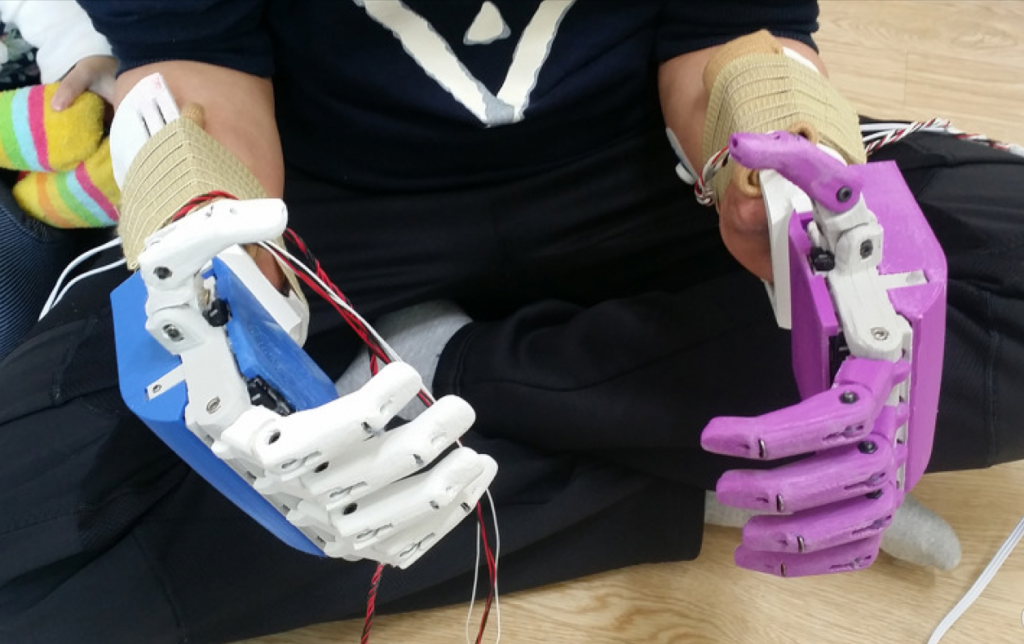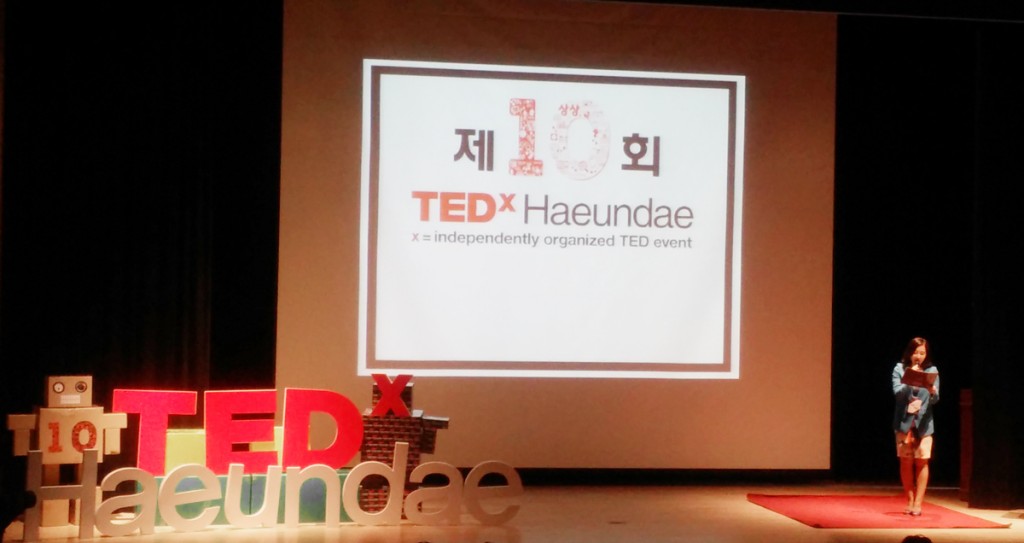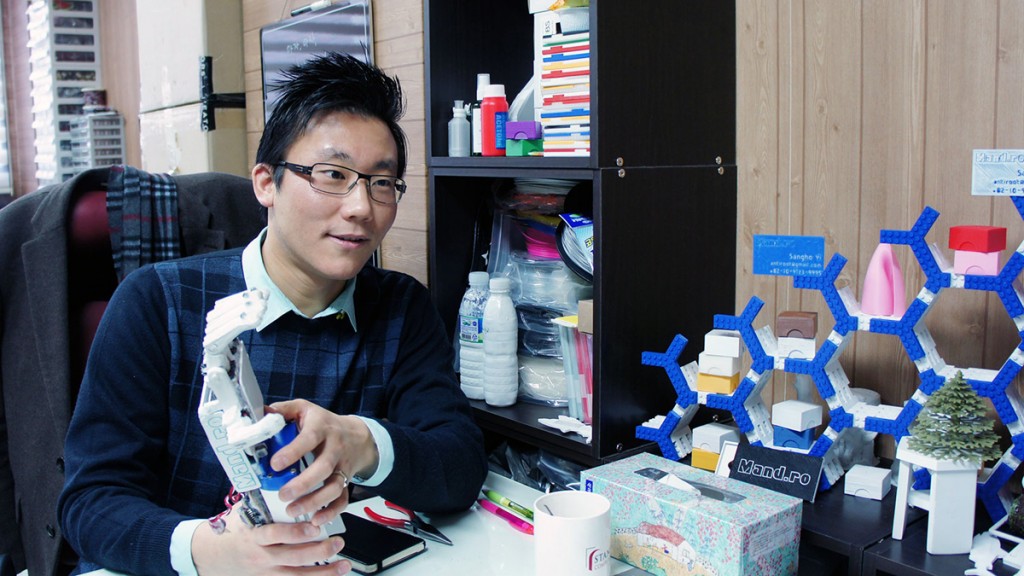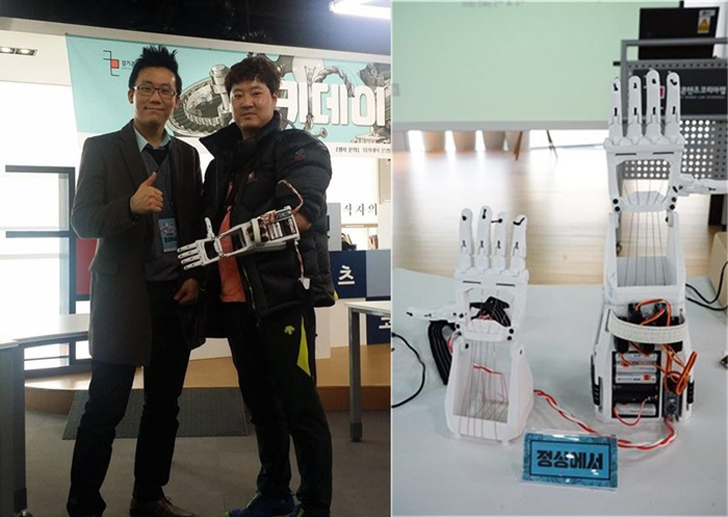I was invited to the 10th TEDx Haeuedae in Busan, South Korea, recently, and, while there, met Yi Sangho, the CEO of Mandro, who was not only in attendance, but was also one of the speakers of the day. While it was great fun seeing him again, as he was one of the very first people I met when I started to write for 3D Printing Industry, it also gave me a chance to catch up on some of the projects he has been working on. When it was his time to take the stage, the announcer introduced him, very appropriately, as ‘a very busy Korean Maker’.
Q: Why did you come all the way to Busan from Seoul? It’s quite a trip.
A: I was invited to be one of the speakers at this TEDx conference and came to introduce my latest project, ‘Jeong Sang Ae Seo’ [meaning “at the peak”, in English]. The project is about manufacturing artificial arms using 3D printing and delivering them to those who need them.
Q: How did you get involved in this project? I mean, I know how busy you are… what was it about this project that grabbed your attention?
A: I became involved by accident (no pun intended… okay, maybe a little). Accidentally, I was reading a posting on one of the 3D printing community boards here in Korea, and this guy had said, “I lost my both my wrists in a squeeze press. I tried to save the severed parts, but they were already dead. I found out that an electronic prosthetic arm was 40,000,000Won (around 37,000USD). It was too expensive…”
The posting moved me, and, with my background as a software specialist, and now a full-time Maker, I thought that I could help. I started to look for similar cases in different countries, and realized that all the techniques being used to make prosthetic arms were things that I had already learned and worked with before. So, I jumped in.
Q: How did you get funded?
A: At first I attended the Making competition ‘Wikiday’. For the competition, I was under pressure to make something in a short period of time. So I needed a team member to help me. I teamed up with a person whose online name was ‘Nio’. We had met before in an online 3D printing community. We worked day and night, and were able to make a prosthetic arm in which the fingers move when the person wearing it moves his or her shoulder joint. I successfully finished the presentation at the event, winning second place and 1,000,000 Won [approximately $900 USD]. To build the project for the long-term, I started NewsFunding. This was the way I picked up to receive continuous funding.

The way NewsFunding works is that journalists or reporters profile certain topics or events on the website and the readers who are interested in the story donate money to the projects. The money is spent to produce more news. So far, I have received more than 10,000,000Won [$9,000 USD] in funding.
Q: How is the project progress?
A: The guy who originally posted the story about losing his hands came all the way to meet me and tried the 3D printed arms I had made. It had been less than 20 days since I read the posting and started to produce the new arms. The day I met him, I was able to scan his arm and also check the electromyogram and see how well the sensors worked. [See the latest videos and pictures on his NewsFunding site. His model has come to the point where it can make a fist, grabs, hold objects, and shake hands.)
After giving arms to the people in need, I make sure that I provide an upgraded version that suits them better after about a month.
Q: How will this project evolve?
A: One of the things about this project that shocked me was the price of electronic arms currently on the market. The price varies from $10, 000 USD to $40,000 USD. I decided that I should approach the matter with a long-term perspective. I learned the fact that there are more than 200,000 people with this disability in South Korea, but less than 20 people that can afford the high-end artificial arms. So, I want to make a kit with which people can assemble the arms with instructions. I am trying hard to commercialize the kit within a year. Furthermore, the funding from the readers will be used to educate more experts on this project. I found four universities in Korea that offer classes related to my project. I will also try to standardize the fabrication process and training aids for the prosthetic arms.
Q: Current goals? The rule you live by as you proceed with this project?
A: As I decided to take this project long-term, one rule I made was that ‘there should be no one who cannot afford a prosthetic arm owing to financial difficulties’. I also want to share all the know-how of the process, so that I can spread the technology. Specifically, I want the arm to weigh less than 0.5Kg, and all the parts combined together in the arm to cost less than $300 USD, and the thumb and index fingers must move properly. So, I plan to focus on this project this year.
Before I got into this project, I thought 3D printing was just a tool to solve simple problems. Now. I am starting to think that the technology can bring happiness to many people and can do something valuable for our lives as a whole.





